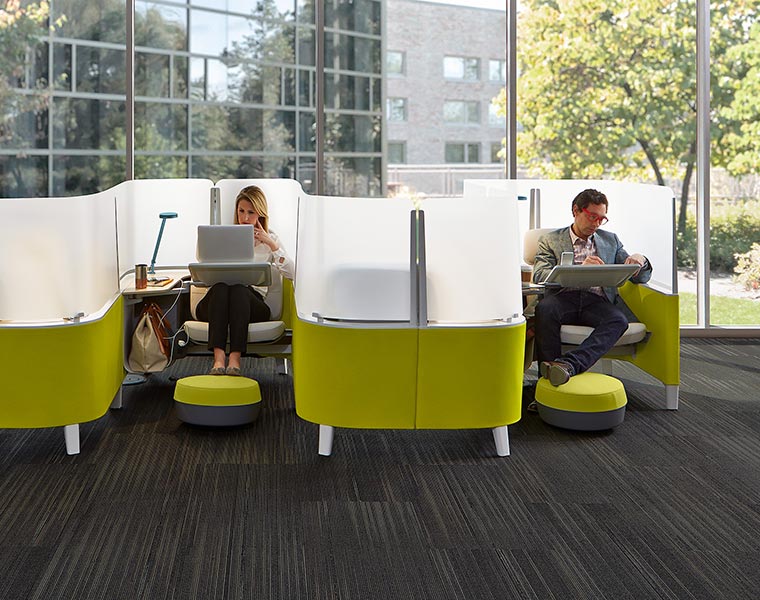It wasn’t until recent decades that people began to really acknowledge – or even recognise – that there is an intrinsic connection between professional performance and personal health. Since then, this connection has created a pivotal turning point within many sectors, particularly the commercial interior design industry, that has inspired a pronounced focus on improving health in the workplace.
According to research by Business in the Community (BITC), a vast 84% of employers realise that they have a responsibility towards their employees’ wellbeing. Despite this widespread awareness, there still appears to be a concerning number of incidents of work-related ill health occurring regularly.

In fact, data from the 2017 Health & Safety Executive Statistics revealed that over 31 million working days were lost during 2016/2017 across the UK due to work-related illness or injury. We believe that with more advice on how to better physical and mental health within the workplace, this number could be drastically reduced.
Here are some ideas on how to improve the health and wellbeing of staff in the workplace:
Consider installing ergonomic office furniture
Workplaces of the past prioritised design over user functionality but these days, the tables have been turned and product development now caters to human-centric operability.

As part of their well-cited Global Posture Study, Steelcase discovered 9 new postures that have emerged as a result of new technologies and diversity in device usage. This means that the furniture you provide your staff with needs to support this physical flexibility in order to avoid physical health issues related to poorly designed facilities.
Click to read more on how ergonomic office design can improve health in the workplace.
Promote more agile modes of work
While traditional dedicated desks are still necessary for some employees, many businesses are now favouring more agile approaches to work in which staff can move around the workspace more freely according to requirement.

Incorporating products such as sit-stand desks and dedicated collaboration and social spaces will encourage staff to get up out of their seats more regularly and work in the right setting for the task in hand.
You could also consider introducing standing or walking meetings to further boost blood flow, brain function and muscular relief.
Embrace the benefits of flexible working
As you might remember from our article on the difference between agile working and flexible working, the two are different in terms of objective but very closely linked nonetheless.

While agile working and the choice and control on how and where staff works encourages more physical movement throughout the day, flexible working helps nurture mental wellbeing.
Flexible hours, the ability to work from home and other modern concepts such as a pet-friendly office will show that you are acknowledging the fact that the lines between personal and professional lives are becoming increasingly blurred. This will make sure you staff feel happy and appreciated.
Provide a dedicated place for privacy
Another one of the ways you can improve mental health in the workplace is by taking measures to combat the Privacy Crisis which has emerged as a result of more businesses making the transition into an open plan workspace.

According to studies by the University of California, more than 70% of workers are dissatisfied with their speech privacy. If staff feel like they can’t carry out confidential tasks in private, this can create frustration and in turn, impact mental health.
Similarly, if employees don’t have somewhere secluded to go to concentrate on individual focus work, this too could have a negative impact on mental wellbeing.
Click for more tips on how to create privacy in an open plan office.
